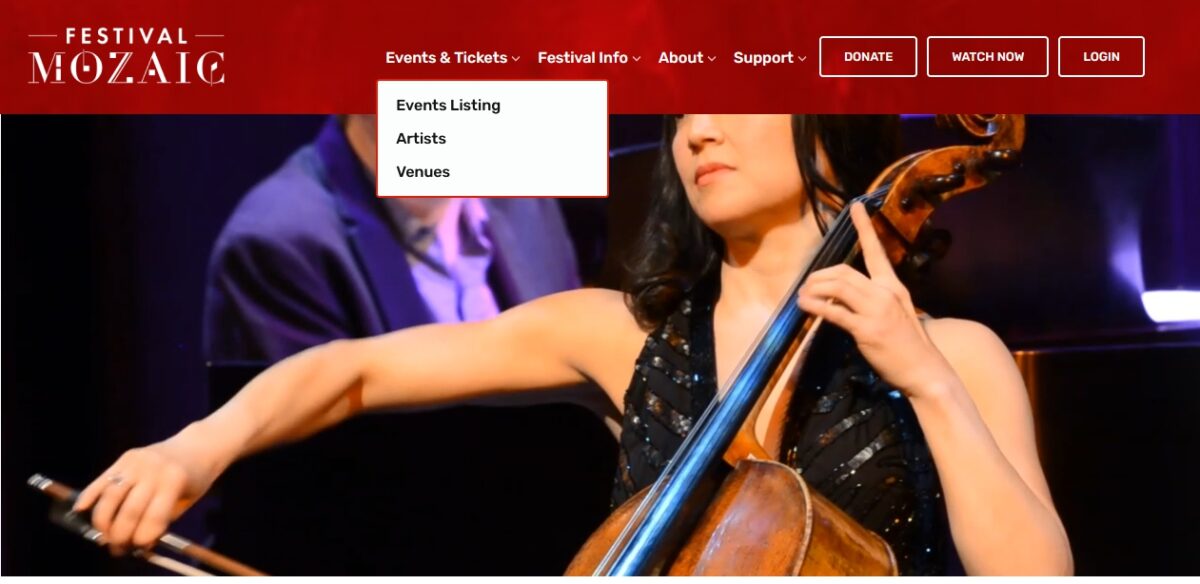Festival Mozaic is dynamic in more ways than one!. Their new site on ARTdynamix™ leads with a home page dominated by compelling videos that tell the story of their offerings including the world-renowned Festival in San Luis Obispo County. Like the rest of us, they are adapting to the changing world with exciting options online.
Since the Festival occurs in multiple locations, ARdy has added an adaptive map to help visitors navigate the various Festival venues (and an easy way for the Festival Mozaic team to manage). Take a peek here. Click on a pin and you’ll see the venue information and weather. Makes you want to spend some time on the California coast I bet.
About Festival Mozaic:
Festival Mozaic is an annual celebration of music that takes place on California’s beautiful Central Coast in San Luis Obispo County. The Festival consists of chamber music concerts, orchestra performances, crossover and popular artists, Notable Encounter educational events, and free community events including mini-concerts, family concerts, master classes, lectures, and open rehearsals. Festival artists are the best in their field and come to San Luis Obispo from all over the world.




